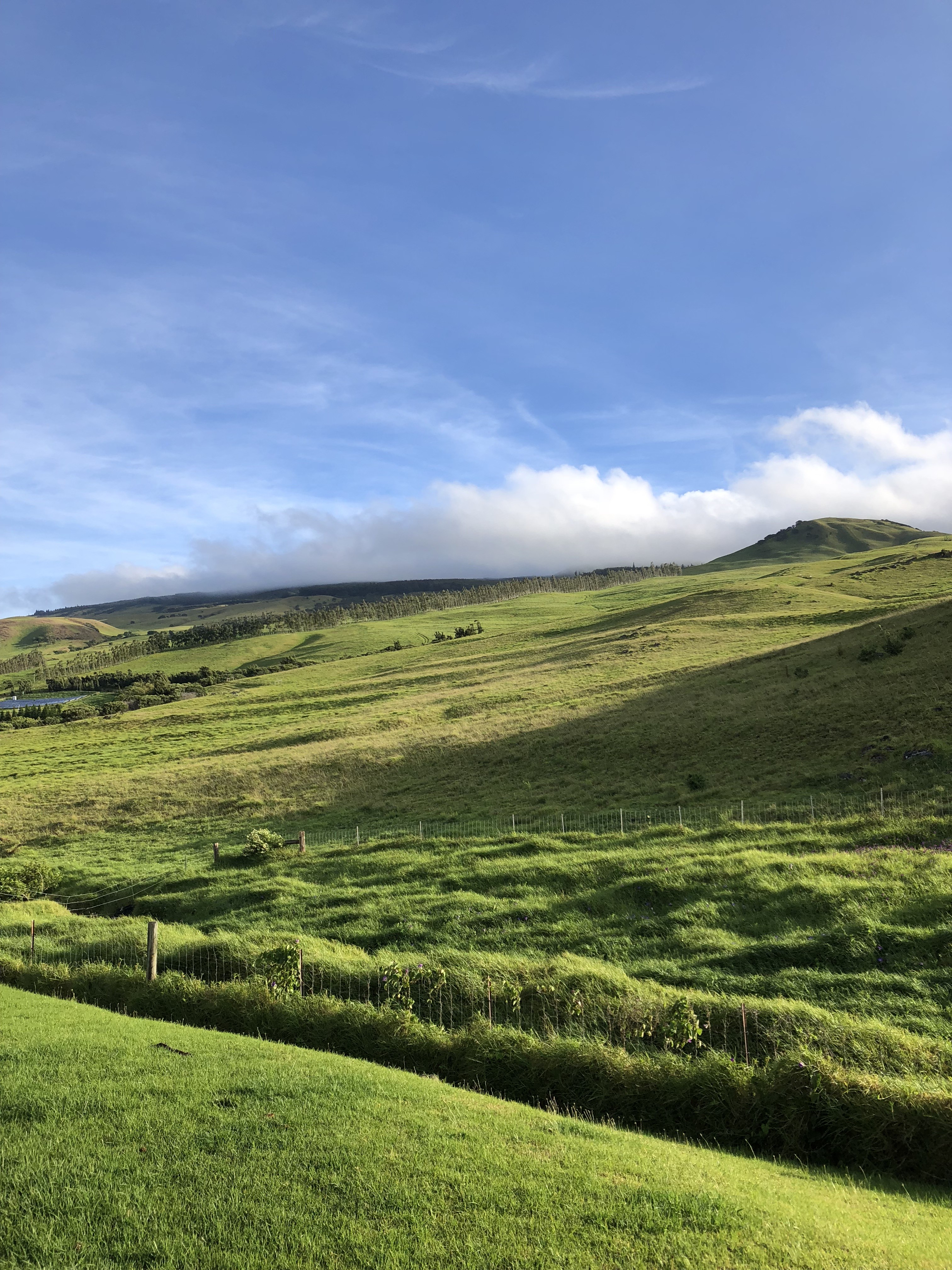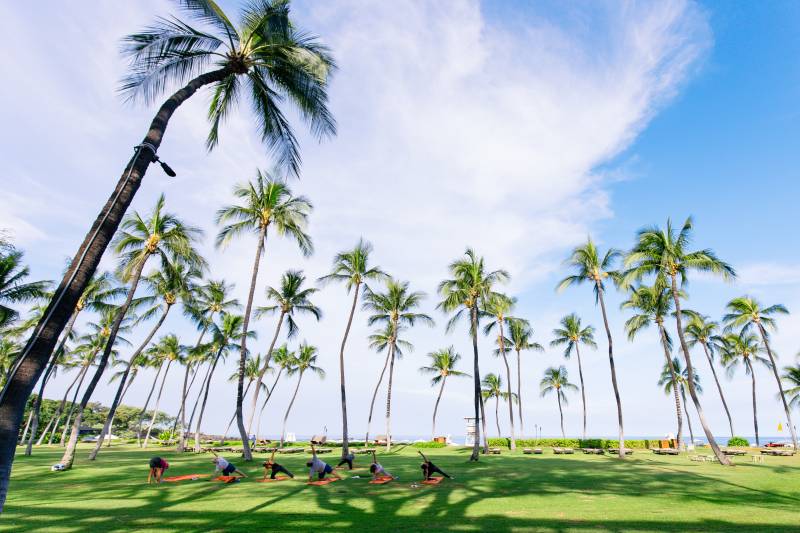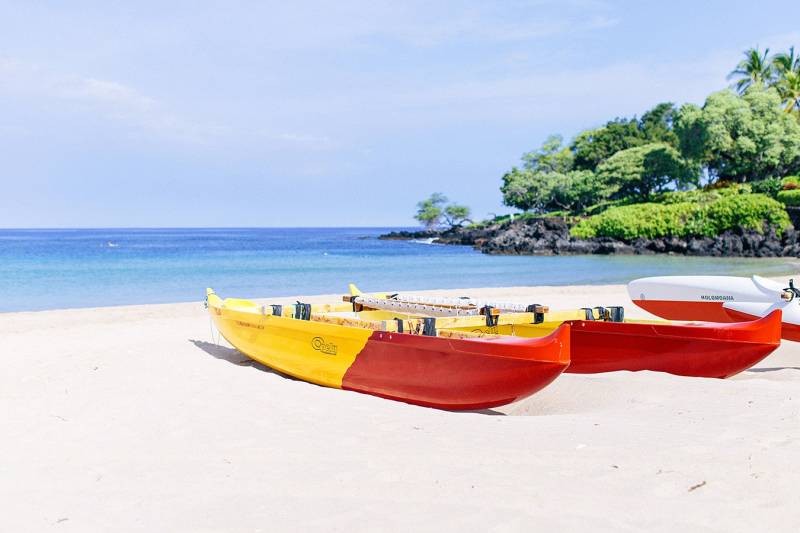Hawaii Island Still Has 4,000 Square Miles of Clean, Natural Beauty To Explore
Until very recently, Hawai‘i Volcanoes National Park has been one of the biggest attractions bringing tourists to the Hawaiian Islands. The focus of much media attention in the past month, Kīlauea has been an active volcano since 1983 and is one of Hawai‘i’s most popular attractions. Over the years residents and visitors have been drawn to the wonder of seeing nature at work in the creation of new land.
Sadly for many who rely on tourism as their livelihood, most of the park is currently closed until further notice, due to legitimate concerns in that area. However, we want to point out that volcanic activity is affecting less than 1% of the Big Island’s land mass. That’s why it is known as the “Big” Island! While the media is full of dramatic images, we want you to know that there are still 4,000 square miles of clean, natural beauty to explore and enjoy on Hawai‘i Island! Those miles look like this…

Thursday morning, May 31, 2018 – Kauna‘oa Bay, Big Island of Hawai‘i. Photo credit: Hawaii Life’s Bob Chancer

Thursday morning, May 31, 2018 – Kauna‘oa Bay, Big Island of Hawai‘i. Photo credit: Hawaii Life’s Bob Chancer

Thursday morning, May 31, 2018 – Puako, Big Island of Hawai‘i. Photo credit: Hawaii Life’s Katie Minkus

Thursday morning, May 31, 2018 – Waimea (Kamuela), Big Island of Hawai‘i. Photo credit: Hawaii Life’s Bob Chancer
It’s important to note the following:
- Lava flows are currently affecting less than 1% of the Big Island’s land mass
- The lava flows and volcanic activity span only 25-30 square miles
- Hawai‘i Island is 4,028 square miles in size (almost the size of Connecticut)
- The volcanic activity is restricted to the lower Puna area, which is about 100 miles from Kailua-Kona
- Dr. Virginia Pressler, Hawai‘i’s Department of Health Director has declared the air quality for the vast majority of the Hawaiian Islands to be “clean and healthy” and has said that when tradewinds are blowing, “… the vog and ash routinely move in a southwesterly direction and out to sea away from the Hawaiian Islands.”
- Shield volcanoes and stratovolcanoes behave in entirely different ways.

Mauna Kea Resort and surroundings, Kohala Coast of the Big Island of Hawai‘i. Photo credit: Hawaii Life’s Winston Welborn.

Mauna Kea Resort and surroundings, Kohala Coast of the Big Island of Hawai‘i. Photo credit: Hawaii Life’s Winston Welborn.

Mauna Kea Resort and surroundings, Kohala Coast of the Big Island of Hawai‘i. Photo credit: Hawaii Life’s Winston Welborn.

Mauna Kea Resort and surroundings, Kohala Coast of the Big Island of Hawai‘i. Photo credit: Hawaii Life’s Winston Welborn.
More Information
For more information, please check out our recent posts about air quality, vog, and which parts of Hawai‘i Island are being affected:
This Could Actually Be One of The Best Times To Visit the Big Island
Volcanic Activity Affecting Less Than 1% of Big Island’s 4,028 Square Miles of Natural Beauty
For the latest update on air quality in the Hawaiian Islands, please reference the State of Hawai‘i Interagency Vog Information Dashboard. For the latest tourism updates please visit the Special Alerts page of the Hawai‘i Tourism Authority:
Travelers planning a trip to the Hawaiian Islands who have questions can contact the Hawai‘i Tourism United States Call Center at 1-800-GOHAWAII (1-800-464-2924).

Leave your opinion here. Please be nice. Your Email address will be kept private, this form is secure and we never spam you.